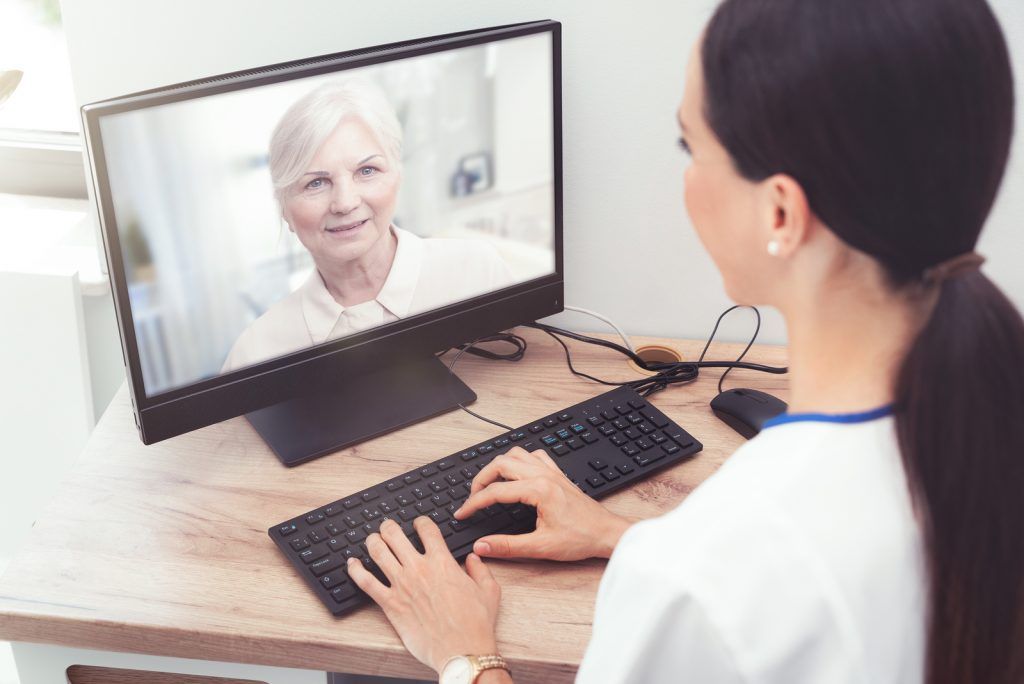Article
Verizon Business ventures into telehealth
Author(s):
According to Verizon Business, BlueJeans Telehealth is way for providers and patients to conduct data-driven virtual care conversations.

Wireless giant Verizon is throwing its hat into the medical arena with the launch of BlueJeans Telehealth.
According to Verizon Business, BlueJeans Telehealth is way for providers and patients to conduct data-driven virtual care conversations. As healthcare organizations look to advance their telehealth practices post-pandemic by extending personalized care into the home, BlueJeans Telehealth gives healthcare providers and their care teams a new way to simply and securely connect with patients remotely.
In a white paper titled “The Future of Telehealth – Balancing Security and Ease of Use,” healthcare organizations (81%) expect to see a greater investment in telehealth solutions over the next 2-3 years, with 85% of decision-makers identifying “ease of use” as a top-five driver in producing good outcomes from telehealth.
While many hospitals and health clinics have adopted video conferencing services during the pandemic for providing patient care, BlueJeans Telehealth was designed from the ground up for healthcare organizations to simplify the virtual join and visit experience and offer greater access to care, provide more flexibility for providers and patients, improve safety and extend the reach of services available.
Tami Erwin, CEO of Verizon Business, noted that while the use of telemedicine has been steadily growing for some time now, the pandemic has accelerated telehealth adoption and changed the conversation around what patient care will look like moving forward.
“We worked closely with an advisory board of health system clinicians and healthcare decision-makers to build BlueJeans Telehealth specifically to address the most pressing needs for a virtual-first telehealth offering--from ease of experience to enhanced security,” Erwin said in a statement. “Today’s launch is just the beginning for Verizon in what we see as the future of telehealth, especially when you consider the innovation that will come from 5G mobility, broadband and cloud capabilities.”
According to Verizon, experience working with healthcare providers during the pandemic was invaluable in informing what matters most in the delivery of world class virtual care. Penn Medicine is one institution that quickly leveraged telemedicine early in the COVID-19 pandemic to ensure continuity of care to patients while keeping both them as well as their workforce staff safe and healthy.
C. William Hanson III, MD, chief medical information officer for the University of Pennsylvania Health System, pointed out that after rapidly mobilizing the staff and infrastructure in March 2020, the system was able to scale to more than 1million televisits by February 2021.
“It was essential that our patients be able to rely on us to continue their care in all settings, and innovating to offer them telemedicine and remote monitoring options was an essential part of maintaining our capacity to care during the pandemic,” he said in a statement.
According to Verizon Business, BlueJeans Telehealth delivers an intuitive experience for patients, providers and administrators. Using the device of their choice, patients can easily and quickly meet with their providers through their desktop or mobile browser or the BlueJeans app.
The company added that BlueJeans with Dolby Voice Audio provides high-quality audio, minimizing disruptions to the visit so patients and providers can communicate important clinical information clearly. Providers and administrators will also benefit from a streamlined experience, as visits are embedded directly within their existing Electronic Health Record (EHR) workflows.
To simplify administrations and reimbursements, licensing is based on a per-visit model, which allows for straightforward data capture and reporting—an important aspect considering 59% of survey respondents cited uncertainty about telehealth reimbursement as a top challenge for adoption and utilization moving forward. BlueJeans Telehealth licenses will also be available in a named host format.
The future of remote care is reliant on smart accessibility that will help doctors make speedier diagnoses and recommend effective treatments. The customizable patient landing experience of BlueJeans Telehealth reduces the monotony of the pre-visit “waiting room” time by including an optional pre-visit medical condition survey and onboarding materials for patients, with a library center that enables providers to customize patient education for patients logged in for a virtual visit. Furthermore, medical interpreter services through partners such as Voyce, AMN Language Services and LanguageLine Solutions will be available in 200+ languages, including sign language, in addition to transcription and closed captioning services for enhanced accessibility.
Verizon Business noted that security and privacy are built into the BlueJeans Telehealth platform—including Access Controls, Encryption, Privacy Checks, Locked Meetings, Fraud Detection, and Moderator Controls—to help protect healthcare organizations and patients.
Moreover, BlueJeans Telehealth is HIPAA-ready and Verizon will sign HIPAA business associate agreements with its customers that address regulatory requirements regarding privacy and security.
According to Scott D. Boden, MD, vice president for business innovation at Emory Healthcare, the benefits of digitizing healthcare practices have long been discussed on the clinical side as a way to make care more convenient and efficient for patients.
“It was not until the pandemic that we truly realized the way it could transform the patient-physician relationship,” he said in a statement. “The ability to offer virtual visits using tools like BlueJeans during this challenging time is not only helping to keep patients and practitioners like myself safe, it is also providing a level of care that was previously missing. As we continue looking for new ways to tap into technology to drive better outcomes for our patients, it’s this personalization of care that will shape the future of healthcare.”
Newsletter
Don’t miss out—get Ophthalmology Times updates on the latest clinical advancements and expert interviews, straight to your inbox.




